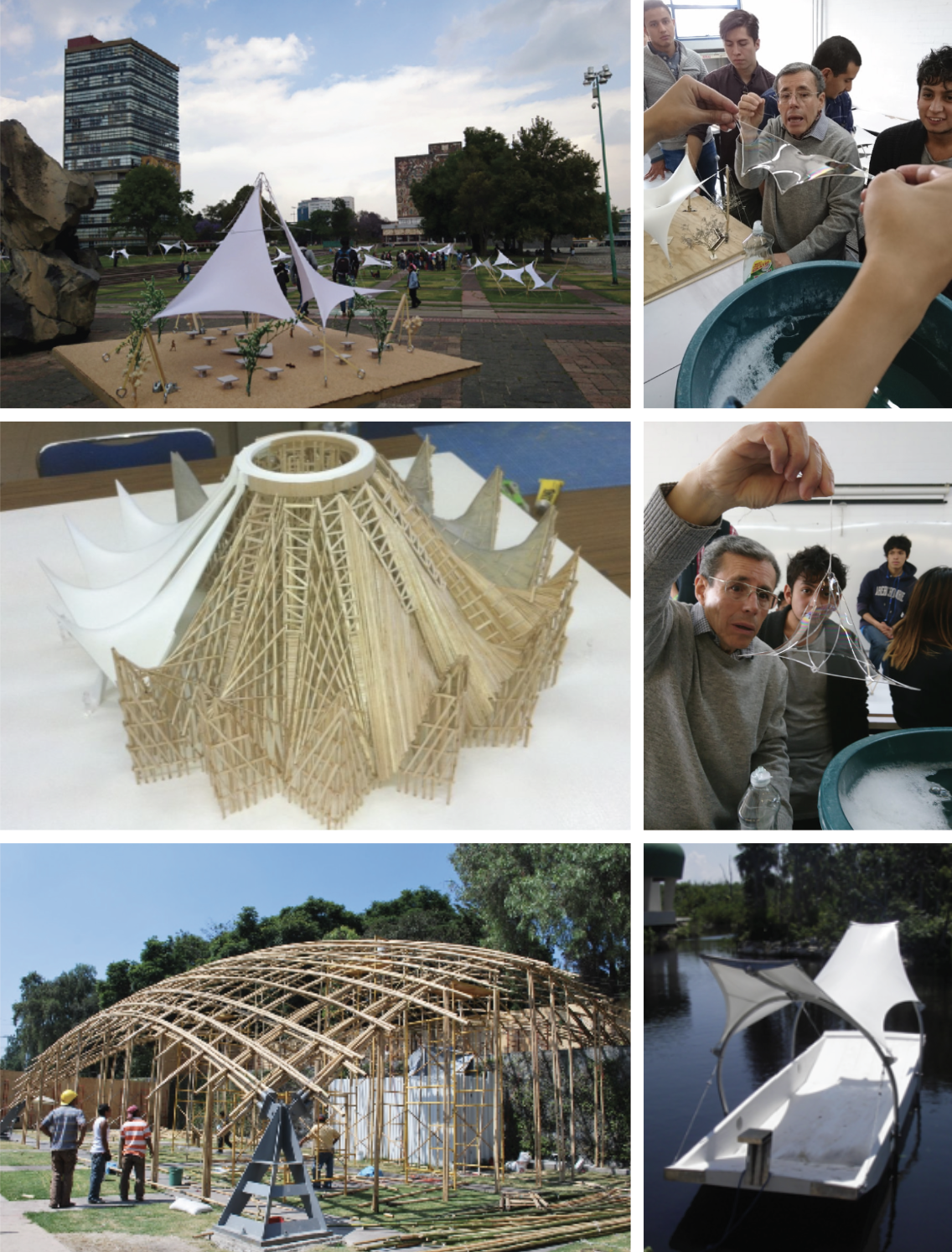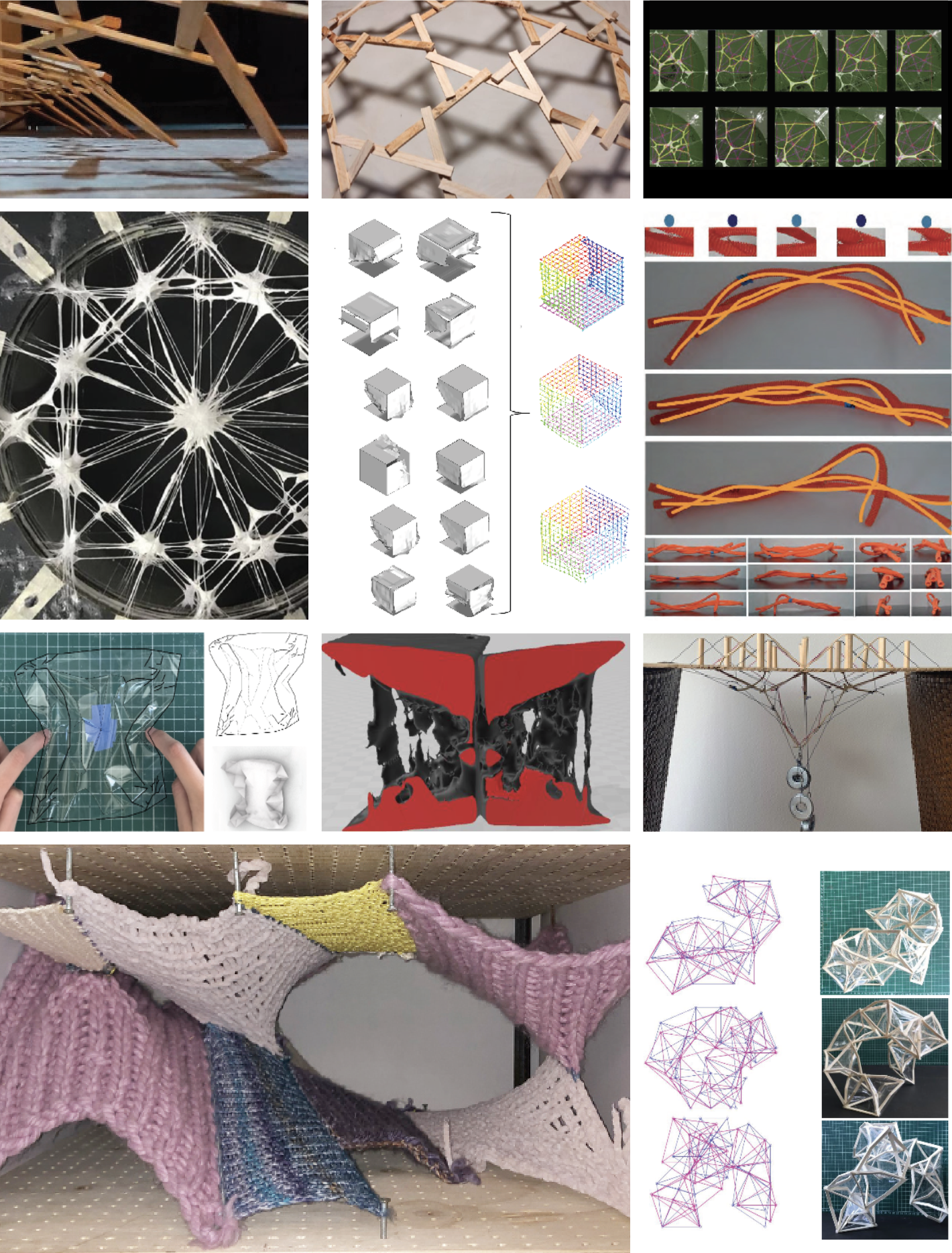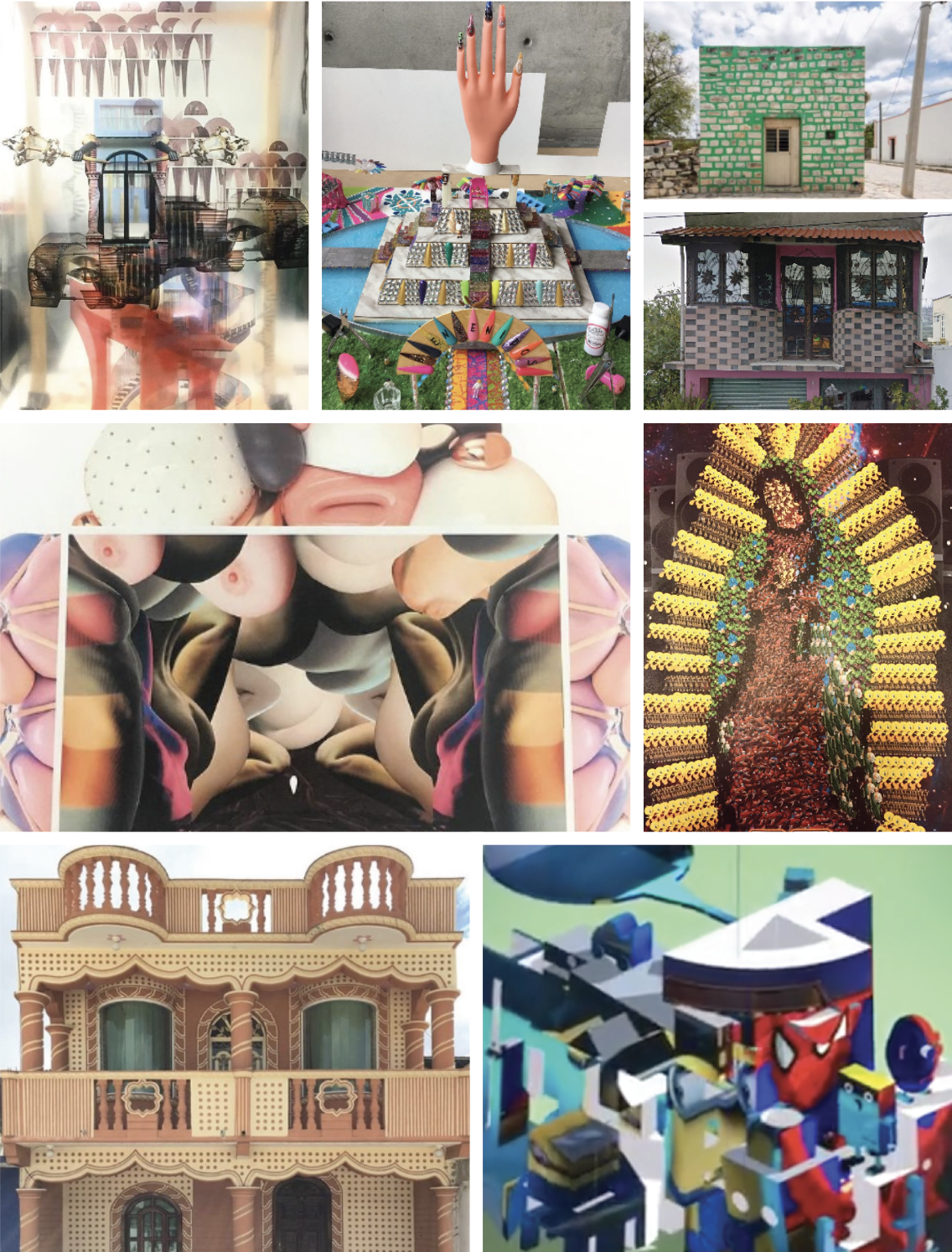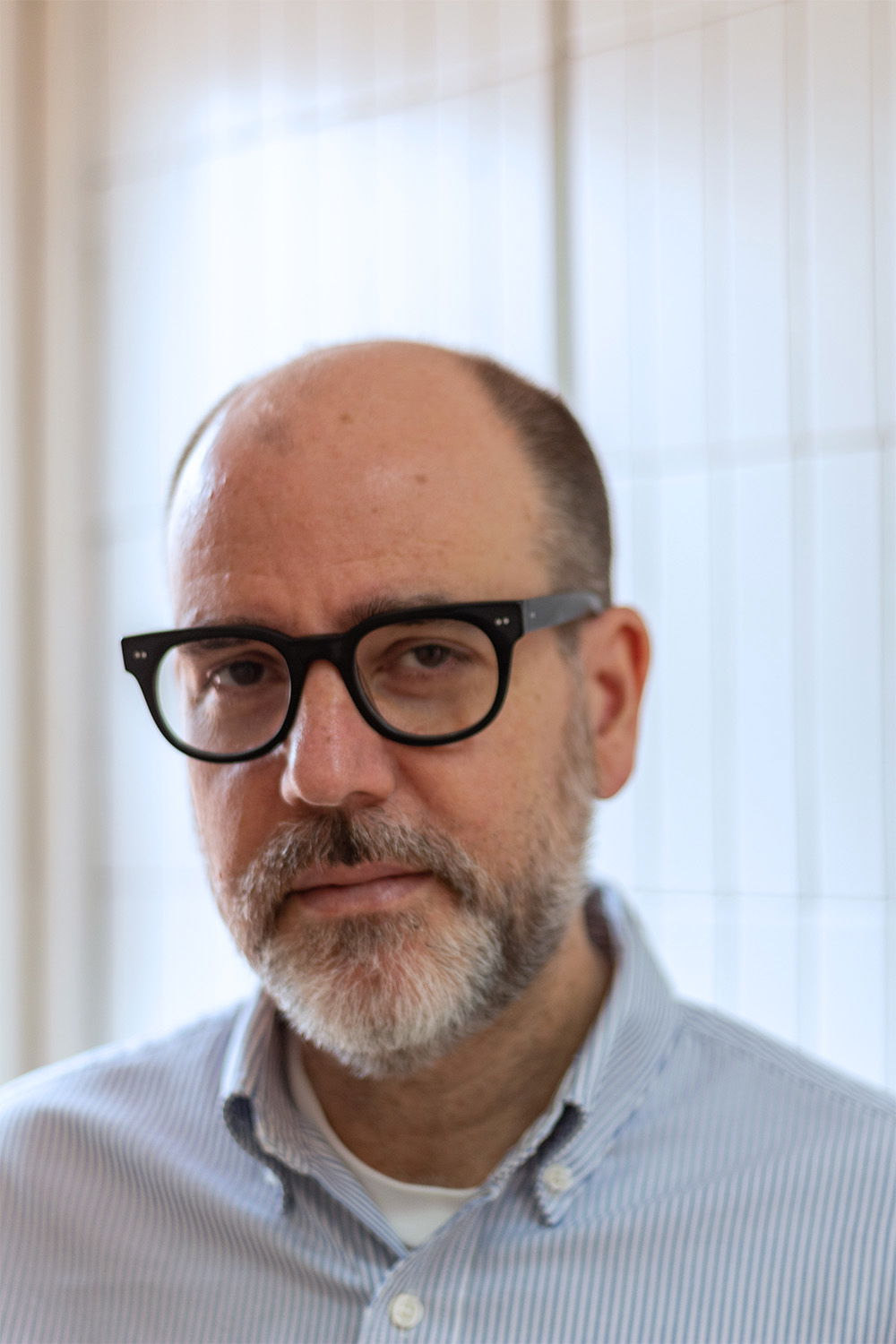ISSUE 3. Toward an Epistemics of Tropicalization by Brian Slocum
Toward an Epistemics of Tropicalization
Brian Slocum, tresRobots Universidad Iberoamericana Mexico City, Mexico
Email: brian@tresrobotos.com
Keywords: Tropicalization, critical practices, knowledge transfer, Mexican techne.
Introduction
If you were expecting another article lamenting Mexico’s position behind the rest of the world, you should look elsewhere (you need not look hard[1]). But neither is this an apologia; there is plenty to criticize, but contextualization is also important. As I have argued elsewhere,[2] knee-jerk criticisms of the state-of-the-art in Mexico are clouded by an insidious cultural inferiority complex (especially among the well-educated upper classes of society) that prevents objective comparison of the actual situation with imported value systems, ideas, methods, or products.
In her introduction to Extrastatecraft: The Power of Infrastructure Space, Keller Easterling argues for an expanded conception of infrastructure that includes systems and frameworks beyond the electricity grids and highways that we normally associate with the term, stating that “[t]he shared standards and ideas that control everything from technical objects to management styles also constitute an infrastructure. Far from hidden, infrastructure is now the overt point of contact and access between us all — the rules governing the space of everyday life.”[3] The US and Europe are net exporters of this type of infrastructure, while the rest of the world must adapt. The ‘power’ of infrastructure space exceeds physicality, forcing compliance with both explicit and implicit rules of engagement in order to stay in the game. Mexican manufacturers, for example, make standard doors for the entire North American market, but since the largest market still employs the imperial system of measurement, most standard doors made for sale and installation in Mexico and Canada (which use the metric system like nearly every other nation on the planet) measure 91.44cm [36in].
Tropicalization
Adaptations of this type can be understood in the context of a broader methodology called “tropicalization.” First used in the mid-nineteenth century,[4] the word “tropicalize” means to adapt products destined for use or sale in the countries lying between tropics of Cancer and Capricorn to make them resistant and therefore more suitable for wet, hot, and humid climates. It is still used to describe specific modifications to machinery and circuitry for use in parts of the world where humidity and fungus can wreak havoc on electrical systems. In common usage, it has come to mean any modification employed to adapt to local ways of doing things: appropriations of style translated for climate and customs,[5] adaptations for local code compliance and alterations of details to match local construction practices/techniques,[6] and finally as a euphemism for cost-cutting[7] and the “replication” (i.e., knocking off) of product designs.[8] In this way, both ideas and products are mediated for importation. Indeed, as seen in the case of the door manufacturers above, even when the ultimate goal is export, the ontological mode of operation is one of importation and adaptation. Simple adaptation may be seen as a form of passive acceptance of the status quo while the strategies associated with the euphemistic connotation can be read as critical refusal.[9] Rather than dismissing these practices as haphazard and backward responses to outside influence, we may see them instead as an emergent set of operative strategies of knowledge transfer that provides potential solutions to a given problem at hand while simultaneously serving to dismantle structures of (in)validation imposed from without.
To understand the potential for tropicalization in architecture specifically as a critical practice emanating from Mexico, first it is necessary to explain some basic characteristics of the current situation here. In technical terms, since the climate in much of the country is more temperate than the rest of North America and most of Europe, architectural details can be more forgiving in terms of air- and water-tightness. This means that technical details become less of a driver of form, the part less physically operative than the whole. Conceptually, this results in an emphasis on materiality (phenomenology) over material (behavior/morphology). In practice, enclosures are more monolithic with fewer layers, details are less complicated and are primarily the result of aesthetic rather than technical concerns. Further, imported products are expensive, raw materials are relatively plentiful, and labor is cheap, which means that it is far more economical to replicate than to specify a product. Perhaps most importantly, barring exceptional cases, architects in Mexico are not legally responsible or liable for failures in the technical performance or code compliance of their designs. All the above means there is very little risk associated with the custom modifications associated with tropicalization; indeed, it is possible to conclude that the practice is encouraged.
Tendencies
From the foregoing, five tendencies emerge that have the potential to constitute an epistemics of tropicalization in architecture:
1.Tropicalization is a heuristic practice characterized by iteration, trial-and-error, and pragmatism.
2.The Mexican construction industry can be understood as a vast infrastructure for rapid analog prototyping. Separately built full-scale mock-ups are rare, but low construction costs means that prototypes can be done in-situ and repeated until an adequate result is obtained. Tropicalization is (mostly) analog.
3.Tropicalization involves making but also ‘making do.’ Agile and ad hoc, many options can be studied quickly in the pursuit of an acceptable adaptation. More than one passable solution may result from the interaction of the parameters of the problem space.
4.Serving as a simplification engine, tropicalization is a converter from high-tech to low-tech. Anti-specialist by nature, tropicalization is an ideal methodology for generalists; the successful translation from high to low requires sufficient know-how to ensure that modifications perform well enough technically (and aesthetically) while resisting the fetishization (and costs) of ever greater precision.[10]
5.Tropicalization is a political and aesthetic practice of dissent. Perhaps the most extensible lesson of tropicalization is its rejection of assessments of success or failure based upon imported systems of validation. “The work of dissensus is to always reexamine the boundaries between what is supposed to be normal and what is supposed to be subversive, between what is supposed to be active, and therefore political, and what is supposed to be passive or distant, and therefore apolitical.”[11] Tropicalization is exemplified by resistance to the pressures of standardization in favor of a local techne based on local conditions and expertise.[12]
Architecture Education
With the concepts above in mind, we can look at some current examples in architectural education; these tendencies factor in one way or another into the pedagogical programs of the undergraduate architecture studios described. The MECAMETRIA seminar at the Universidad Nacional Autónoma de México (UNAM) emphasizes the importance of interdisciplinarity and has employed a heuristic approach for the development of simplified computational tools for the use of students. At the Universidad Iberoamericana Department of Architecture, Urbanism and Civil Engineering, two undergraduate design studios with quite different approaches demonstrate some of the tactics of tropicalization. The PROTODIGITAL studio encourages the use of computational design strategies without the computer, while ARQDELACULPOP eschews traditional conceptions of aesthetics and representation in architectural dicourse/education.
MECAMETRIA

Fig. 1.Mecametria Studio, UNAM Images: Courtesy of the Lightweight Structures Laboratory Archive, Universidad Nacional Autónoma de México.
“The cognitive tool that permits [architects] to address [structural problems] lies in understanding existing relationships between form and the mechanical behavior of structural systems and speaking of form we refer specifically to geometry.”[13]
Based on a mash-up of ‘mechanics’ and ‘geometry’ in Spanish, Mecametría is taught by Dr. Juan Gerardo Oliva, of the Lightweight Structures Laboratory at the Faculty of Architecture at UNAM, who completed his doctorate under the tutelage of Frei Otto in Germany. More rigorous than ad hoc, the course is premised on a refusal of the conventional assumption that the architect’s primary task should be the translation of concept to form without regard to other considerations. In favor of a computational form-finding approach involving a cross-disciplinary focus, the course prioritizes the interactions of material behavior, performance, fabrication/assembly, and programmatic function, with aesthetic value only being achieved through the successful integration of the first set of parameters. Adopting the modality of heuristic simplification in both physical and digital models, students use analog models to approximate larger scale behaviors. Relying on a methodology grounded in comparisons against the results of imported complex software tools, the Laboratory developed custom software that incorporates less expensive and more readily available digital tools[14] enabling the students to perform digital simulations of their designs. The tradition of lightweight structures in Mexico is itself the result of a process of tropicalization dating back at least in part to the work of Felix Candela;[15] subsequent developments by Dr. Oliva and the Lightweight Structures Laboratory add to an already mature collection of tropicalized strategies for the adaptation of lightweight shell and membrane structure construction techniques to local imperatives.
PROTODIGITAL

Fig.2. Protodigital Studio Universidad Iberoamericana Images (from left to right beginning upper left): Luis Jiménez x 2, Pablo Rodríguez x 2, Ana Cecilia Coral, Miriam Reynoso, María Paula Perdomo, Valeria Gómez, Rodrigo Malo, Francesca Tardan, Pilar Colado.
“The post-digital architect needs hybrid abilities and occupies a place between the analogue and the digital world, where design and making are synthetic activities in practice as well as intention.”[16]
In Mexico, architectural production generally remains ’computerized,’ resisting the implementation of ‘computational’ practice[17] in large part due to the persistence of the myth that the use of the computer for tasks other than documentation inhibits creativity. At the Universidad Iberoamericana, Protocolos Exógenos / Propiedades Endógenos (Exogenous Protocols / Endogenous Properties), co-taught by the author and Pablo Kobayashi, takes the position that both the ‘digital’ (the encoding of information) and the ‘computational’ (operations using that information) transcend the computer and can be converted to analog, protodigital methodologies. Ironically, the studio’s critical response to the stigmatization of the computer is to negate its use, relying almost entirely on physical modeling (analog simulation) at 1:1 scale, privileging computational design strategies over the mere instrumentalization of the computer[18]. Using readily available materials, the students investigate the connection between material performance and morphology, learning design as a process of material programming. To avoid imposed value judgments and to determine the fitness of their own pieces, the students are encouraged to establish their own individual criteria for evaluation. The goal is to conceptualize rules for the formal manipulation and assembly of their material systems as a form of low-tech analog software developed to exploit the inherent properties of those materials. The process depends upon a productively naive, intuitive, and error-prone quasi-scientific investigation of material behavior under various conditions (bending, stretching, folding, breaking, etc.) which themselves can be recognized as a set of protodigital operations.
ARQDELACUTPOP

Fig. 3. The Architecture of Popular Culture Universidad Iberoamericana Images: Courtesy of Instagram user @arqdelaculpop
"Professional Discomfort in the face of the banal, the vulgar, the generic and the mediocre competes with the creative transgressions and subversions that take place [in unplanned developments], as well as questioning our conceptions of what a city should really be.”[19]
Taught by Natalia Gálvez and Andrés Souto at the Universidad Iberoamericana, the studio is called Arquitectura de la Cultura Popular (The Architecture of Popular Culture). Students are encouraged to study graphic and formal aspects of popular culture as manifested in the informal settlements of Mexico City and to apply their findings to a semester-long design project. Nothing is off limits; in addition to exploring tendencies in the ad hoc styles of auto-construction, previous projects have also focused on drag culture, the graphics of lucha libre (Mexican professional wrestling), and the promotional artwork of sonideros (DJs/promoters). A common thread is the treatment of these so-called low cultural “transgressions and subversions” as purposeful strategies of tropicalization in their own right, providing valuable non-judgmental and unpretentious cues to the students as they pursue their own tactics for a more nuanced engagement with the entirety of the urban environment, in all its messy richness. Through a productive refusal of the persistent dogmas of aesthetics in architecture, the students’ research simultaneously challenges the elitism of the academy and traditional modes of representation in architecture.
Conclusion
The tactics of tropicalization provoke a shift in perspective, generating alternative criteria that permit contingent valuations of latent or underexploited characteristics of the current situation that may otherwise go unnoticed. Although the tactics and examples described above are of Mexican provenance — and despite having origins in the modality of importation — tropicalization is exportable. Returning to Extrastatecraft, “The pervasiveness of infrastructure space may even offer the means to amplify an adjustment or make it contagious.”[20] This is particularly true if we include the structures of western academia and knowledge transfer among these imported/imposed infrastructures. Beyond modification of any particular product, this set of tendencies — a reaction to centuries of imposed value systems and foreign infrastructure space — can be converted into a methodology to be applied toward the critical investigation, reexamination or rehabilitation of architectural pedagogy and practice on the fringes, both in Mexico and abroad.
Notes
[1] For just one example based on a Google search using the terms “Mexico lags”: “Fully unleashing the country's potential and lifting productivity also in the sectors that are lagging behind requires a comprehensive programme to improve the skills of all Mexicans, both at school and in the labour market.” From Koske, I. et al. (2015). Mexico: Policy Priorities to Upgrade the Skills and Knowledge of Mexicans for Greater Productivity and Innovation (Rep.), https://www.oecd.org/mexico/mexico-policy-priorities-to-upgrade-skills-and-knowledge-of-mexicans.pdf (Accessed 19 February 2021).
[2] See Kobayashi, P. & Slocum, B. (2018). “Introduction: RECALIBRATION.” ACADIA // 2018: Recalibration. On imprecision and infidelity. [Proceedings of the 38th Annual Conference of the Association for Computer Aided Design in Architecture], 18-20 October 2018, pp. 12-15. http://papers.cumincad.org/cgi-bin/works/Show?acadia18_12.
[3] From Easterling, K. (2014). Extrastatecraft: The Power of Infrastructure Space. London, UK: Verso. p. 12.
[4] Tropicalize. (n.d.). https://www.merriam-webster.com/ (Accessed 14 February 2021).
[5] Quiñones, F. (2020). “Mi casa es mi refugio: At the Service of Mexican Modernism in Casa Barragán.” The Avery Review 48 (June 2020), http://averyreview.com/issues/48/mi-casa (Accessed 13 February 2021). On the second page of the essay, the author refers to the design of Barragan’s house as a “‘tropicalization’ of the ideals of architectural Modernism.”
[6] Actually sold as a service to multinationals; for one example, see https://guedesarquitetura.com.br/en/lorem-ipsum-3-2/.
[7] Through a process of tropicalization itself, the American concept of value engineering has been imported and in Mexico is increasingly synonymous with abaratar or ‘to cheapen.’
[8] Replica furniture. (2019). From https://en.wikipedia.org/wiki/Replica_furniture (Accessed 14 February 2021). For an example, see also: https://www.gaiadesign.com.mx/silla-replica-eames-blanco.html (Accessed 15 February 2021).
[9] In recent discourse, cultural theorists such as Jack Halberstam argue for the critical rehabilitation of language that is often derogatory in popular usage. Halberstam’s use of “low theory” for example, “tries to locate all the in-between spaces that save us from being snared by the hooks of hegemony and speared by the seductions of the gift shop. But it also makes its peace with the possibility that alternatives dwell in the murky waters of a counterintuitive, often impossibly dark and negative realm of critique and refusal.” From Halberstam, J. (2011). The Queer Art of Failure. Durham and London: Duke University Press, p. 22.
[10] Hughes, F. (2014). The Architecture of Error: Matter, Measure, and the Misadventures of Precision, Cambridge, MA: MIT Press, p. 3.
[11] Quote from Jacques Rancière in Carnevale, F., & Kelsey, J. (2007). “Art of the Possible: An Interview with Jacques Rancière.” Artforum International 45(7), https://www.artforum.com/print/200703/fulvia-carnevale-and-john-kelsey-12843# (Accessed 17 February 2021).
[12] This should not be mistaken as an argument for a return to the Critical Regionalism espoused by historian Kenneth Frampton. Tropicalization goes beyond reaction and passive resistance and should not be conflated with regionalist or even nationalist agendas. Frampton’s call for a Critical Regionalism could be considered a type of tropicalization in that it calls for “resisting the domination of universal technology” (Frampton, 1983, p. 28) by upholding a sense of phenomenological place-ness in architecture. But it now seems quaint to have argued that the hegemony of globalization could be avoided, or moreover, resisted solely through a locally inflected architectural form. Further, whereas the methods (and results) of Critical Regionalism could by definition be understood to be fixed to a specific place, the strategies of tropicalization, while local in origin, are repeatable and exportable, becoming essentially place-less. For more on Critical Regionalism, see Frampton, K. (1983). "Towards a Critical Regionalism: Six Points for an Architecture of Resistance", in The Anti-Aesthetic: Essays on Postmodern Culture. Hal Foster (ed.), Bay Press, Port Townsen, pp. 16-30.
[13] “La herramienta cognoscitiva que permite [a los arquitectos] enfrentar este tipo de problemas [estructurales] se encuentra en la comprensión de las relaciones existentes entre la forma y el comportamiento mecánico de los sistemas estructurales y al hablar de la forma nos referimos específicamente a la Geometría” From Ontiveros Hernández, M. J., & Oliva Salinas, J. G. (2009). “Mecametría” [Valencia, Spain]. EGE Revista de Expresión Gráfica en la Edificación 6, 112-116. https://riunet.upv.es/handle/10251/142796 (Accessed 18 February 2021) [Author’s translation].
[14] See the description of the development of the GeoG software in Oliva Salinas, J. G. & Valdez Olmedo, E. (2008). “Simplified computer-aided formfinding procedures applied to light weight structures.” Spanning Nano to Mega [Proceedings of the 6th International Conference on Computation of Shell and Spatial Structures], 28-31 May 2008, Ithaca, NY. https://ecommons.cornell.edu/handle/1813/11525 (Accessed 21 February 2021).
[15] Oliva Salinas, J. G. & Valdez Olmedo, E. (2009). “Towards a future in sustainable structural design.” Evolution and Trends in Design, Analysis and Construction of Shell and Spatial Structures [Proceedings of the International Association for Shell and Spatial Structures (IASS) Symposium 2009], 28 September - 2 October 2009, Universidad Politecnica de Valencia, Spain. http://hdl.handle.net/10251/7148 (Accessed 21 February 2021).
[16] From Sheil, R. (2005). “Transgression from drawing to making.” Architectural Research Quarterly, 9 (1) pp. 20-32.
[17] For a discussion of ‘computerization’ versus ‘computation,’ see Menges, A. & Ahlquist, S. (2011). Computational Design Thinking. London: Wiley. p. 10-29. According to the Universidad Iberoamericana Department of Architecture’s webpage, the following is the mission of the computer aided design (CAD) coursework cycle (author’s translation): “The [CAD] cycle aims to provide students with computational skills that will permit them to: evaluate, analyze, integrate, experiment, document [and] represent their architectural projects.” The page contains no additional information regarding the role of computation. See http://arqing.ibero.mx/ciclo-de-daac/ (Accessed 4 February 2021).
[18] Menges & Ahlquist. (2011). Computational Design Thinking. p. 8.
[19] “La incomodidad profesional ante lo banal, lo vulgar, lo genérico y lo mediocre compite con las transgresiones creativas y las subversiones que se producen [en los desarrollos no planeados], así como con las interrogantes a nuestros planteamientos de lo que realmente debería ser una ciudad.” From Castillo, J. M. (2001/2017). “La metrópolis de lo informal” [Mexico City]. Arquine: Revista Internacional de Arquitectura 16, originally published summer 2001 and republished online July 3, 2017, https://www.arquine.com/la-metropoli-de-lo-informal/ (Accessed 18 February 2021) [Author’s translation].
[20] From Easterling. (2014). Extrastatecraft. p. 311.
About the author.

Brian Slocum
Brian holds a Master of Architecture from the Graduate School of Architecture, Planning and Preservation of Columbia University and a Bachelor of Science in Architecture from Georgia Tech. He is currently an Adjunct Professor in the Department of Architecture, Urbanism and Civil Engineering at the Universidad Iberoamericana in Mexico City, where he teaches a design studio which focuses on analog material research employing computational and performative design strategies. Brian is the founder of tresRobots, an independent studio for design and architectural technologies research and co-founder of the architecture firm Diverse Projects, with offices in the United States and Mexico; he is licensed in the State of New York. In 2008, Brian was the recipient of an Individual Research Grant for ad hoc infrastructures from the New York State Council on the Arts. He was also a participant in the group exhibition “Landscapes of Quarantine” at Storefront for Art and Architecture in 2009-2010, where he presented Context/Shift, a prosthetic piece installed on a door panel in the gallery designed by the architect Steven Holl and the artist Vito Acconci. Brian has also contributed essays to the journal CLOG and Pamphlet Architecture #23: MOVE Sites of Trauma, by Johanna Saleh Dickson. Brian served as the Secretary for the Association for Computer Aided Design in Architecture (ACADIA) from 2019-2021, was Conference Site Co-chair for ACADIA 2018 Mexico City, Recalibration: On Imprecision and Infidelity, and more recently was Conference Technical Co-Chair for ACADIA 2020 Distributed Proximities.